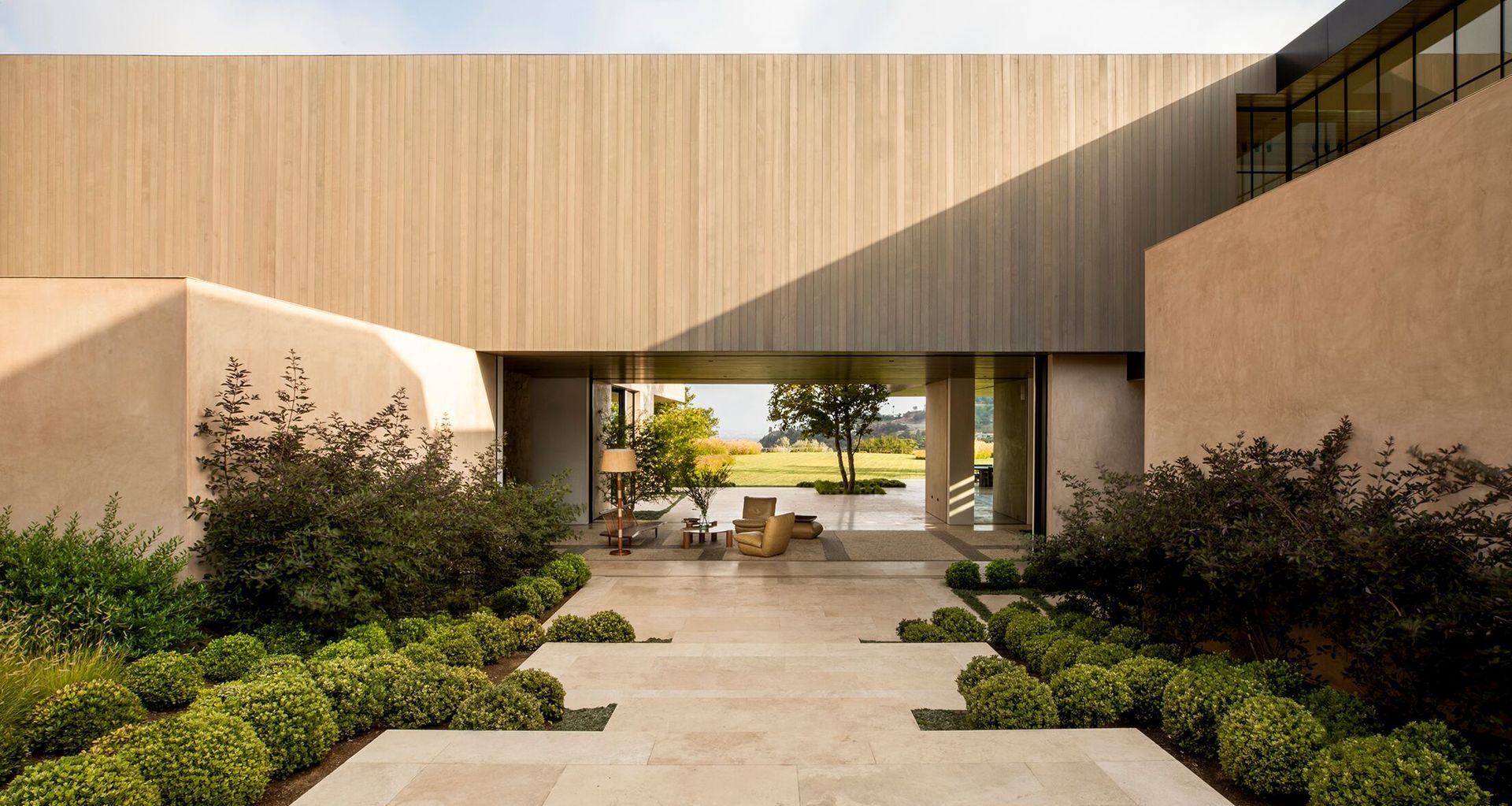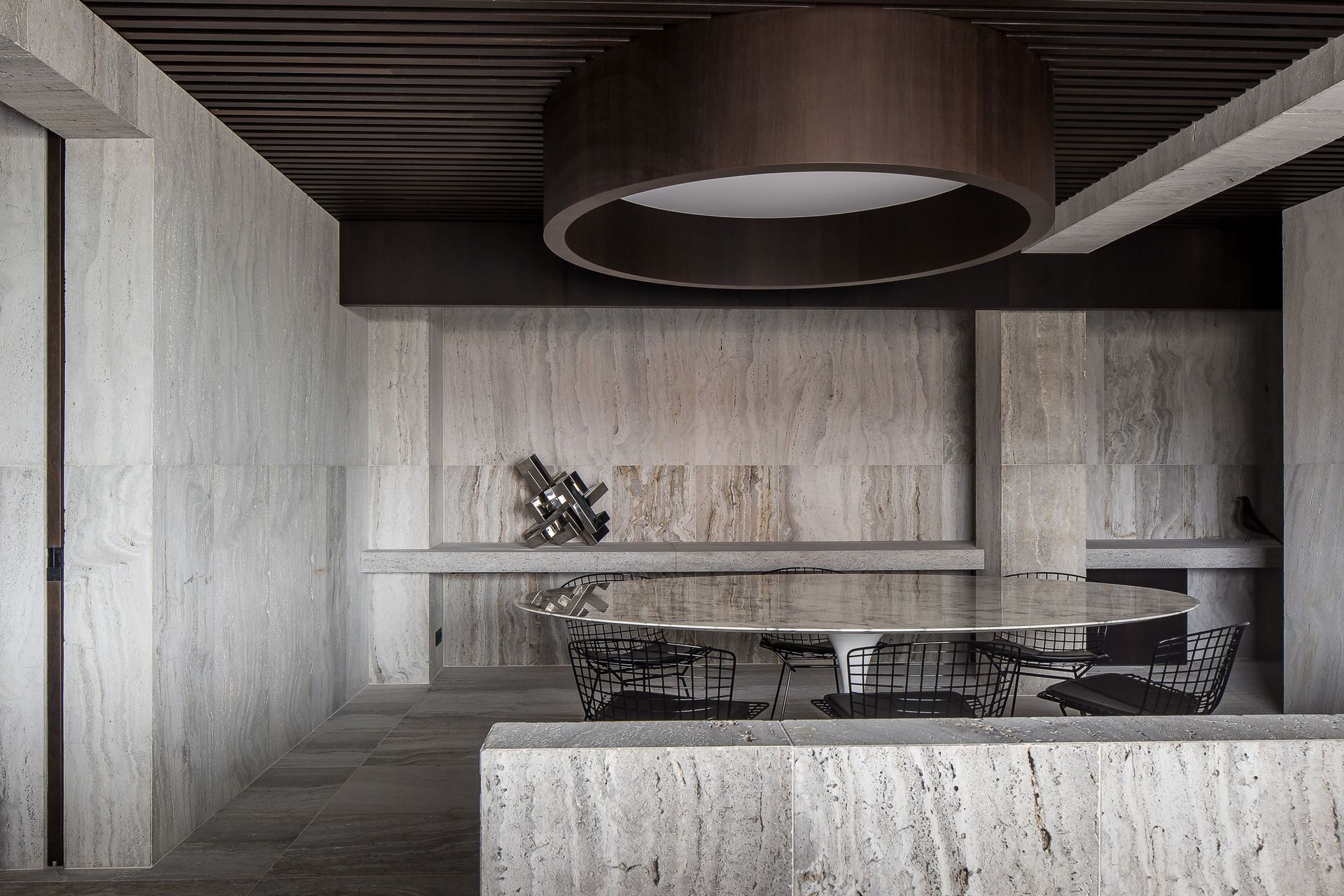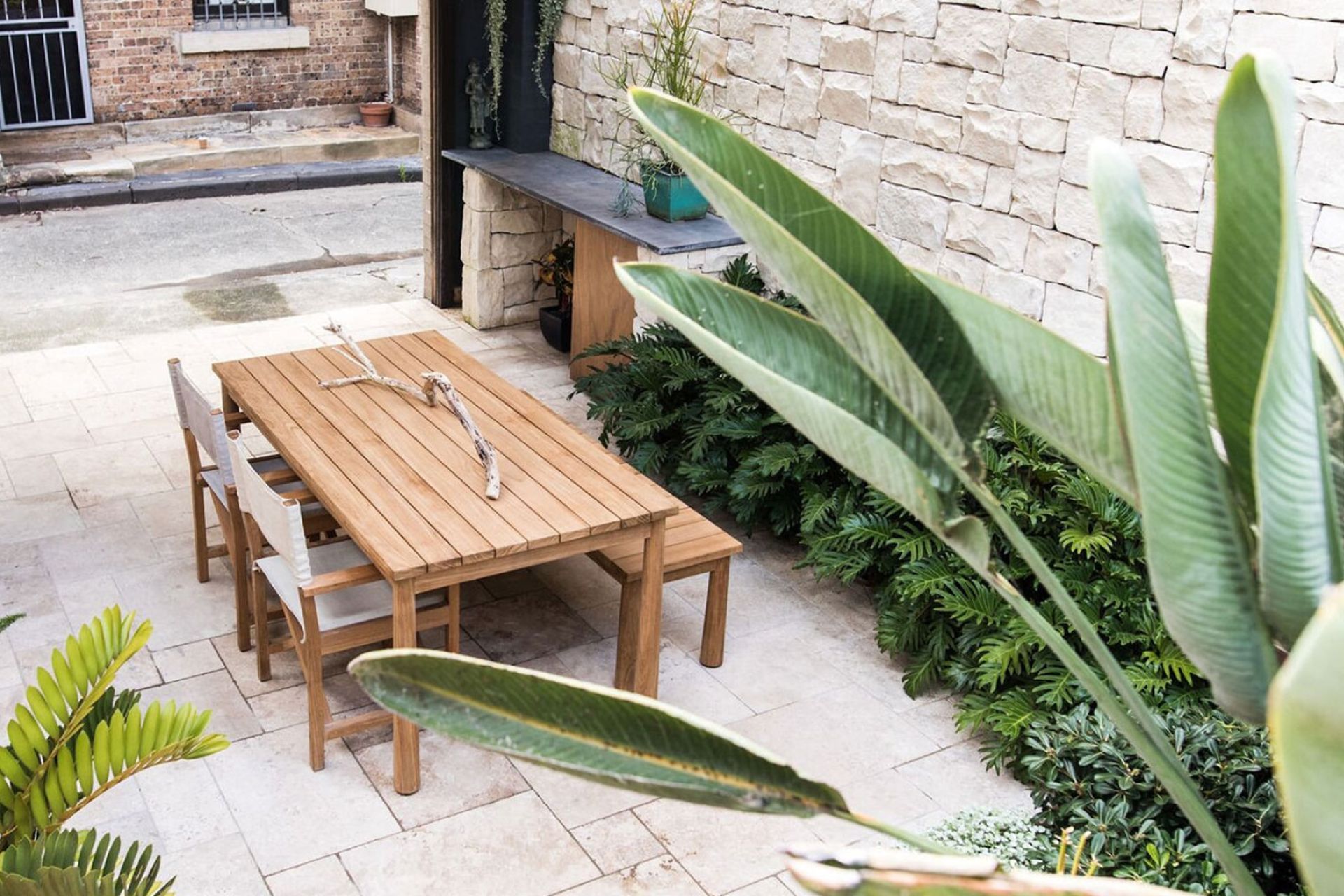The Travertine Buyer's Guide for 2024
Written by
24 March 2024
•
6 min read

A travertine tile floor is a real showstopper, drawing the eye with its natural magnificence and robust material quality. Anyone who's done a bit of research will already know this to be true but to those who haven't, its impeccable aesthetics will likely be the thing that strikes you first. However, before making any decision, you should always dig a little deeper to ensure it's the right choice for you. As a premium product, it is an investment and you'll also have to commit to a bit of ongoing maintenance to get the most out of it over its lifespan.
What is travertine?
Travertine stone is a type of limestone that forms around mineral spring deposits, renowned for its distinct, earthy appearance, porous textures and range of warm, neutral colours. Highly durable and versatile, it's a popular choice for both interior and exterior applications including flooring, wall cladding, bathroom vanities, and kitchen countertops. Its thermal properties also make it suitable for underfloor heating systems, an increasingly common feature in homes in New Zealand homes. The unique patterns and tones of travertine tiles and slabs ensure that no two installations are exactly alike, offering a personalised look for each and every home.
Benefits of choosing travertine
There are many reasons to choose travertine as the natural stone of choice in your home across a variety of different applications. These include:
- Durability: Travertine stone is incredibly durable offering great longevity in different climactic conditions. Travertine flooring also performs well in high-traffic areas.
- Unique aesthetics: Thanks to its beautiful veining, patterns and warm colours, no two travertine surfaces are ever the same, allowing homeowners to achieve a personalised look.
- Thermal conductivity: With excellent thermal properties, travertine floor tiles are a popular choice to support underfloor heating systems.
- Eco-friendly credentials: Travertine stone has some strong eco-friendly attributes as a natural, non-toxic, recyclable and biodegradable material that is harvested sustainably.
- Increases property value: As a premium and highly desirable natural stone, any presence of it in the home instantly enhances the feeling of luxuriousness.
Related article: Outdoor tile design ideas for New Zealand homes
Travertine colours, finishes and patterns
As already mentioned, one of the great things about travertine stone is the wide range of colours that it comes in which includes beige, gold, grey, ivory, red, walnut and variations in between.
These colours are complemented by a number of different finishes which includes:
- Tumbled travertine: Textured and more natural appearance.
- Honed travertine: Smooth finish without gloss, ideal for a contemporary look.
- Polished travertine: Shiny, reflective surface that enhances its natural colours.
- Brushed travertine: Slightly textured surface that offers a rustic feel.
Finally, the natural veining and pattern variations of travertine stone means each piece bears its own unique signature from nature. The veining in travertine is typically characterised by contrasting colours that run in linear or web-like patterns, adding a profound depth and artistic flair to the stone's overall appearance. These patterns range from subtle, almost uniform veining to bold, dramatic swirls and stripes, reflecting the environmental conditions under which the stone was formed. This adds a beautiful, natural motif into the home as well as a feeling of individuality which can make a space feel much more intimate and welcoming.
Cost of travertine in New Zealand
The cost of travertine tiles, pavers and slabs can vary widely depending on the supplier, country of origin, colour, finish, thickness, overall quality and more. Broadly speaking, the cost of travertine tiles in New Zealand can range from $70 - $200 per m2. This puts it among the premium options for stone tiles and other types of flooring but, as you can see in the price range, there are choices that are more cost-effective than others.
Related article: Stunning bathroom tile ideas from beautiful homes in New Zealand
Installation considerations
There are a number of considerations to take into account for the installation of travertine. Firstly, due its porous nature, proper sealing is crucial to protect against staining and moisture absorption, especially in wet areas like bathrooms and kitchens. Choosing the right sealant and understanding the resealing frequency are essential for maintaining the stone's appearance. The installation process for travertine tiles requires absolute precision. The natural variation in thickness and size of the tiles requires skilled installation to provide a level surface. Also, in areas prone to freezing temperatures and thawing, specific installation techniques may be required to prevent cracking. For these reasons combined, it is highly recommended that you utilise the services of an experienced tiler.
Care and maintenance
Travertine does require a bit of care and maintenance to prolong its appearance and lifespan as do most natural stone products. Part of this involves sealing the surfaces upon installation and thereafter to prevent staining and damage from spills. This is primarily due to its porous nature but a high-quality sealer applied every year or two (depending on the manufacturer's recommendations) will give it adequate protection. Other than that, regular cleaning with a soft cloth or mop using cleaners specifically designed for natural stone will suffice. Be sure to avoid acidic substances for cleaning as this can damage travertine. For outdoor travertine floor tiles, periodic cleaning to remove moss, lichen and mould is important as is keeping abrasive materials or heavy machinery off its surface.
How to choose the best travertine tiles for your home
When choosing travertine tiles in New Zealand, it's important to first consider the intended use and location, whether it's for indoor flooring, walls, or outdoor settings, as this will determine the ideal finish and thickness of the tile. Most will opt for honed or brushed finishes for high-traffic areas due to their durability and non-slip properties. For outdoor areas in climates that have more extreme temperatures, you'll want to confirm its performance in those particular weather types. The aesthetics are also important and you'll need to decide if you want a more subtle, uniform pattern or seek one with bold, distinct veining for a unique look. Last, but not least, make sure its colours and finish complements its surroundings, given how visible they will be in the space.
Everything you need to know about travertine stone
With all the essentials covered, you're hopefully in a great position to decide whether travertine stone tiles, slabs or pavers are right for you. They are one of the most durable natural stones on the market that boast elegant natural patterns and veining making it a practical yet stylish choice.
Related article: The pros and cons of ceramic tile flooring


